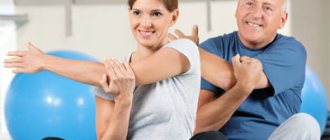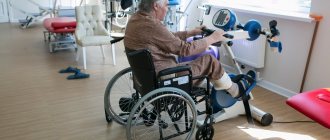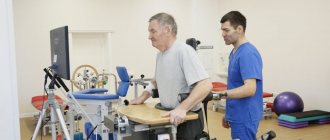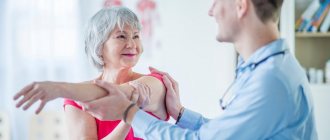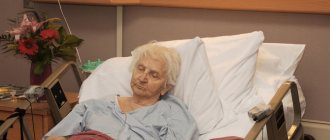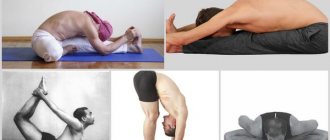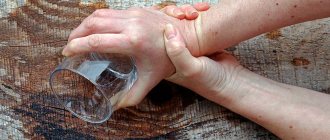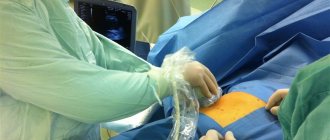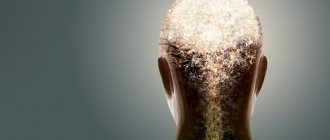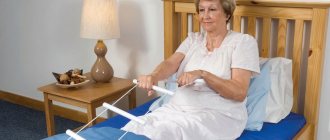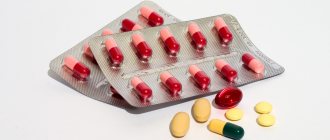Why does the hand stop moving after a stroke?
A stroke occurs due to an acute circulatory disorder in the brain, in which a portion of it dies. Depending on which part of the brain is affected, a person’s brain function is impaired. Because of this, various organs may stop functioning, including limbs - for example, a hand. Because the nerve pathways cross, the left arm will be affected if the stroke occurs in the right hemisphere, and vice versa.
At the same time, there is another dependence: the closer to the right hemisphere the stroke occurred, the more painful the damage to the limbs is felt. This happens because it is in the right hemisphere of the brain that the nerve centers responsible for the motor activity of the body are located. Therefore, a stroke, after which the left arm fails, usually requires longer rehabilitation.
Both types of stroke - ischemic and hemorrhagic - can cause such lesions and impair the motor activity of the hand. Disturbances can be different: pain, loss of sensitivity and coordination, complete paralysis of a limb.
Hand tremors
Thyrotoxicosis
Diabetes
Stroke
Encephalitis
27796 November 25
IMPORTANT!
The information in this section cannot be used for self-diagnosis and self-treatment.
In case of pain or other exacerbation of the disease, diagnostic tests should be prescribed only by the attending physician. To make a diagnosis and properly prescribe treatment, you should contact your doctor. Hand tremors: causes of occurrence, what diseases cause them, diagnosis and treatment methods.
Definition
Tremor is a medical term for trembling in various parts of the body caused by contraction of antagonist muscles. Hand tremor can be either a physiological reaction of the body to severe fear, fatigue, hypothermia, alcohol intoxication (physiological tremor), or a symptom of a number of serious diseases (pathological tremor).
Types of tremor
By localization:
- focal tremor - affects only one anatomical area, for example, arms, head, jaw;
- segmental tremor - involves two or more adjacent parts of the body, for example, tremor of the arms and head;
- hemitremor – trembling spreads to several areas of the body on one side;
- generalized tremor - trembling is widespread and affects simultaneously the arms, legs, head, tongue and voice.
In relation to movement:
- rest tremor;
- action tremor.
According to the vibration frequency,
hand tremors are divided into 3 groups:
- low frequency (less than 4 Hz);
- mid-frequency (4–8 Hz);
- high frequency (8–12 Hz).
The amplitude of
the vibration is divided into:
- to low amplitude,
- medium amplitude,
- high amplitude.
According to severity:
- slight tremor;
- moderate tremor;
- significant tremor;
- pronounced tremor.
Depending on the cause:
- hereditary;
- acquired.
Based on the presence of accompanying symptoms:
- isolated - tremor is the only symptom;
- combined – other neurological symptoms are present.
Possible causes of hand tremor
Physiological tremor is called tremors in the hands against the background of emotional overexcitation, fatigue, fever, after heavy physical exertion, when taking certain medications, coffee, alcohol, or smoking. This type of tremor usually goes away on its own once the underlying cause is eliminated.
Pathological tremor can be a symptom of a fairly large number of diseases.
Endocrine disorders When
the level of thyroid hormones is elevated,
a person often experiences trembling in his hands. In addition, there may be weight loss with increased appetite, muscle weakness, a feeling of heat at room temperature, the skin becomes warm and moist, the heart rate increases, the patient becomes quick-tempered, overly emotional, and the volume of the thyroid gland gradually increases.
In patients with diabetes mellitus
with a sharp decrease in blood glucose levels, not only trembling of the hands, but also clouding of consciousness, even fainting, may be observed. Patients with diabetes need to control their sugar levels and not skip meals.
Metabolic disorders In a rare hereditary disease - Wilson-Konovalov disease
– hand tremors can appear at a young age. The cause of the disease is a violation of copper metabolism in the body; it begins to be deposited in the tissues of organs, disrupting their functioning.
Pathologies of the cardiovascular system
Patients with hypertension
may experience tremors in their hands when their blood pressure rises sharply.
Neurological pathologies Parkinson's disease
– a slowly progressive neurological disease, most common in older people. The exact cause of this disease is still not clear. In Parkinson's disease, hand tremors are one of the first symptoms, appearing at rest, and are eventually joined by head tremors. The tremor increases with excitement and physical activity; in addition, there is an imbalance, muscle weakness, gradual decline of cognitive abilities, memory loss, and depression.
Currently, Parkinson's disease is incurable, but existing treatment methods, especially with timely diagnosis, significantly improve the course of the disease.
Lesions of the cerebellum
as a result of cancer, trauma, encephalitis or stroke are characterized by the so-called large-scale tremor. In addition to trembling, gait and coordination of movements are impaired.
Essential tremor is distinguished separately
. This is a hereditary disease of the nervous system, in which there is a moderate intensity trembling of the hands that occurs during movement and gradually progresses. The disease often begins in middle age, does not affect other body functions, and does not affect mental abilities or memory. In old age, tremor increases, which can lead to a significant decrease in quality of life.
Essential tremor is often mistaken for Parkinson's disease, a much more serious disease that leads to severe disability.
Diseases of the musculoskeletal system In some cases, osteochondrosis of the cervical spine
may cause trembling and numbness in the hands.
Autoimmune diseases
Tremor in
multiple sclerosis
is one of the most common symptoms, and tremors appear not only in the hands, but also in other parts of the body.
Another possible cause of hand tremors is poisoning with toxic substances.
, for example, carbon monoxide, salts of heavy metals.
This is a life-threatening condition that requires immediate medical attention. Trembling hands can become a side effect when taking certain medications (neuroleptics, antidepressants, psychostimulants, some antiarrhythmic drugs, medications for bronchial asthma, etc.).
Which doctors should I contact for hand tremors?
Hand tremors may occur in emergency situations. Increased blood pressure, a sharp decrease in glucose levels in patients with diabetes, injury, stroke - these conditions require immediate medical attention.
In other cases, the first specialist to whom patients turn when tremors appear in their hands becomes. If necessary, consultation may be required; , psychotherapist.
Diagnosis and examinations for hand tremors
Primary diagnosis consists of examining the patient and carefully collecting anamnesis, the doctor specifies the time of onset of the problem and accompanying symptoms, asks the patient to perform several tests: for example, pour water from a cup, write something with your eyes closed (Gibson and Khersonsky maze test), etc. d.
To identify the cause of tremor, or more precisely, the disease that caused hand tremors, laboratory and instrumental diagnostics are prescribed.
Laboratory tests
- To exclude endocrine pathologies, a blood test is performed for thyroid hormones (free thyroxine (T4), free triiodothyronine (T3)), thyroid-stimulating hormone (TSH), antibodies to thyroid peroxidase, antibodies to thyroglobulin, and the level of insulin and cortisol is examined.
A set of measures to restore the hand after a stroke
Restoration of hand motor skills after a stroke occurs under the supervision of physiotherapists. The list of measures includes procedures in different areas:
- physical rehabilitation therapy;
- drug treatment;
- psychological counseling.
Physical rehabilitation therapy
Physical rehabilitation is a critical part of restoring arm movement after a stroke. It involves doctors of various specializations, but primarily physiotherapists, neurologists and rehabilitation specialists. Treatment is aimed at developing and strengthening everyday motor abilities.
The process uses:
- physical therapy and gymnastics
: physical exercises on the arm - from the simplest gradually to more complex, developing fine motor skills; - action and observation therapy
- during these procedures, the patient watches another person performing some actions with his hand (in person or on video), and then repeats after him. The method triggers the work of similar areas of the brain, and this helps restore motor skills of the hand; - mirror therapy method
- within the framework of this rehabilitation technique, a mirror is placed between the patient’s hands in such a way that the image of the movement of the healthy limb creates the illusion of the same normal movement of the affected arm; - tekar therapy
- radio wave exposure to the body to produce endogenous heat. This helps reduce pain and speed up the tissue healing process; - massage techniques
; - acupuncture, modeling
from dough, plasticine or clay; - hydrotherapy methods
: hydromassage baths, contrast and circular showers.
The rehabilitation department has an occupational therapy department and a neuromotor department for the upper limbs. Robotic technologies are used here, including virtual reality. Neuromotor rehabilitation using such high-tech systems is a modern method of restoring hand motor abilities.
The greatest effect is achieved when the doctor competently combines all these methods. In this case, the specialist must first assess the extent to which the patient’s condition allows him to undergo these measures.
Drug treatment
In most cases, rehabilitation of the hand after a stroke requires drug treatment. However, it must be strictly under the supervision of the attending physician.
There are no universal dosages and regimens; each patient needs his own therapy. To make a decision about which drugs and in what doses the patient needs, the specialist studies all available information about him. In particular, medical history, anamnesis, data on clinical manifestations, results of previous examinations and tests.
The doctor may also change your medication regimen during treatment if he has reason to believe that the current dosage is ineffective or insufficient. The basis is new biometric data, information from the patient’s daily records (“diary of a stroke patient”). First of all, we are talking about the dynamics of blood pressure, heart rate, as well as side effects from medications.
Types of drug therapy that are used to restore limb activity after a stroke:
- intramuscular and intravenous injections
, which are aimed at increasing vascular activity and strengthening neurons. These include Botox injections, which significantly reduce muscle spasticity; - lymphotropic drugs
, which are injected directly into the lymphatic system so that the active substance gets into the arm faster; - analgesics
(to reduce pain in the arm),
muscle relaxants
(to relax the muscles of the limb),
anticoagulants
(to prevent the formation of blood clots),
antidepressants
(to treat depression that has developed due to illness) and other drugs, including antibiotics, vitamins and potent drugs - of necessity.
Psychological counseling
The patient’s internal state greatly influences the process and result of restoring the activity of the arms and legs.
Rehabilitation in a specialized center forces a person to change his usual way of life: he distances himself from society, loses independence and independence even in everyday worries. This cannot but affect the psychological state and leads, at a minimum, to discomfort, and at most to the development of depression.
The patient needs understanding, respect and care, but may also experience anger and powerlessness due to loss of control over his own body. To deal with this, a psychotherapist is needed. He will develop the correct technique for working with the emotional state and select a communication method for the family. The doctor will also prescribe pharmaceutical treatment to the patient if it is necessary and fits into the overall drug treatment plan.
